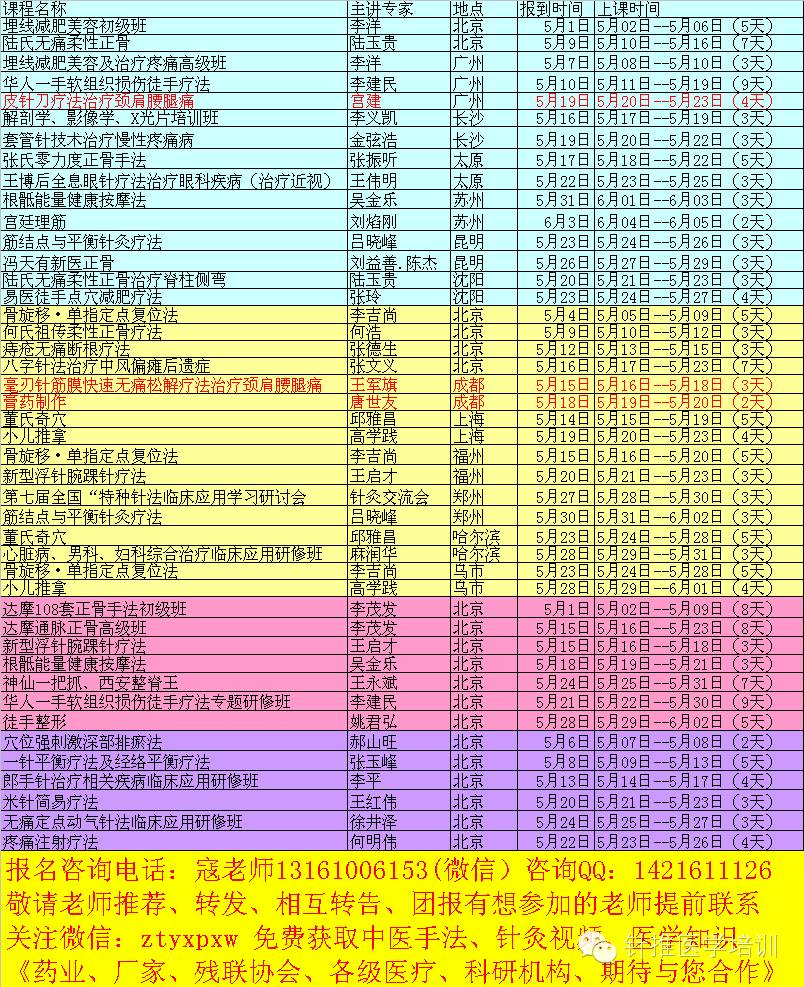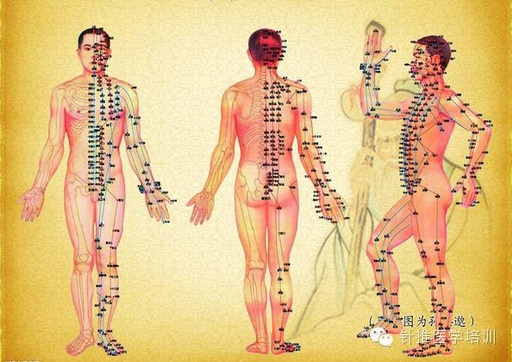
 Tip: Follow the WeChat account: ztyxpxw for a wealth of acupuncture technique videos available for free viewing.
Tip: Follow the WeChat account: ztyxpxw for a wealth of acupuncture technique videos available for free viewing.
Signs of Cupping in the Lung Area:
1. If purple-red spots appear on both sides during cupping, it indicates bronchitis.
2. If reddish patches appear, it suggests lung heat, accompanied by symptoms such as thirst and chest pain.
3. If small rashes appear, it indicates inflammation in the respiratory tract, such as pharyngitis or rhinitis.
4. Light purple or red indicates tonsillitis.
5. Light purple or red indicates lymphatic swelling.
6. White indicates lung deficiency.
7. Enlarged pores indicate wind invasion, exposure to wind-cold, with symptoms like neck stiffness, scapular pain, or accompanying shoulder periarthritis.
Observations of Cupping Marks, Shapes, and Colors:
1. Dark purple-black marks indicate blood stasis, such as menstrual obstruction, dysmenorrhea, or insufficient cardiac blood supply. If the affected area is severely cold or the marks do not fade after several days, it indicates a prolonged condition. If large areas of black-purple marks appear, it suggests extensive wind-cold invasion, requiring symptomatic treatment focused on dispelling cold and eliminating pathogens.
2. Purple marks with patches generally indicate cold accumulation and blood stasis.
3. Scattered purple spots of varying depths indicate qi stagnation and blood stasis.
4. Light purple with blue patches indicates blood issues, accompanied by blood stasis; if it appears at the kidney shu point (Shen Shu), it suggests kidney deficiency; if at the spleen shu point (Pi Shu), it indicates qi deficiency and blood stasis.
5. Bright red marks generally indicate yin deficiency, with both qi and yin deficiency.
6. If there are no cupping marks, or if they disappear immediately after cupping, returning to normal color, it indicates a mild condition.
7. If the color is pink with no spots and quickly returns to normal skin color, it indicates no disease.
Note:
Normal diagnostic color: pink
Liver and Gallbladder: slightly blue
Lung and Intestines: slightly white
Bladder and Kidneys: slightly black, all are normal
Heart: slightly red
Spleen and Stomach: slightly yellow

Signs of Cupping in the Heart Area:
1. If purple-red lines appear connected vertically, it indicates obstruction in the heart meridian, which may present with symptoms like chest tightness and shortness of breath.
2. If small patches appear, it indicates insufficient blood supply to the brain, leading to symptoms like dizziness and a feeling of numbness in the head.
3. Purple-red lines indicate cervical spine diseases.
4. White indicates myocardial ischemia.
5. If large pores appear with mist, it indicates rheumatic heart disease.
6. White indicates qi and blood deficiency.
7. Indentations indicate insufficient heart blood, weak pulse, and shortness of breath.
8. Red indicates excessive heart fire.
Signs of Cupping in the Gallbladder Area:
1. If small depressions appear, it indicates gallstones.
2. If purple-red spots appear around, it indicates dysfunction in gallbladder excretion, which may present with symptoms like bitter taste, rib pain, and jaundice.
3. White indicates low gallbladder function.
4. Light purple circles indicate fear and timidity.
5. Patches of red rash indicate cholecystitis.
Signs of Cupping in the Liver Area:
1. If reddish rashes appear, it indicates excess liver fire, which may present with symptoms like headaches, irritability, flushed face, yellow urine, and dry stools.
2. If the center of the cupping mark is blue, it indicates hepatitis.
3. If light purple circles appear around, with white inside, it indicates qi stagnation due to anger.
4. If purple circles appear around, it indicates fatty liver.
5. If large areas of redness appear with swelling, it indicates alcoholic liver disease.
6. If the entire liver area appears purple or purple-red, it indicates high blood viscosity.
7. If purple-blue and stiff, it indicates liver cirrhosis.
8. If purple-blue spots appear with white interspersed, it may indicate ascites.

Signs of Cupping in the Spleen Area:
1. If reddish rashes appear, it indicates poor appetite or fullness after eating, with symptoms like diarrhea, dizziness, and fatigue.
2. If purple-red and raised marks appear, it indicates signs of spleen enlargement, accompanied by irritability and unstable temperament.
3. Red or reddish marks with enlarged pores indicate spleen damp-heat, chills, and spontaneous sweating.
4. Indentations indicate poor spleen function, weakness, sluggishness, and a tendency to be quiet.
5. Light purple or purple circles indicate qi stagnation and irritability.
6. If the entire area appears purple or purple-red, it indicates high blood lipids and viscosity, possibly accompanied by high blood pressure.
Signs of Cupping in the Stomach Area:
1. If reddish patches appear, it indicates stomach disease.
2. If the center is white, it indicates stomach cold disease, presenting with stomach pain that worsens with cold.
3. If red appears, it indicates excess heat, poor appetite, and food accumulation.
4. If light purple circles appear, it indicates anger.
5. If light purple circles appear around, it indicates superficial gastritis.
6. If dark purple circles appear around, it indicates chronic gastritis.
7. If indentations with light purple appear, it indicates atrophic gastritis.
8. If indentations with gray-white appear, it indicates poor stomach function and slow peristalsis, with reduced appetite and abnormal stools.
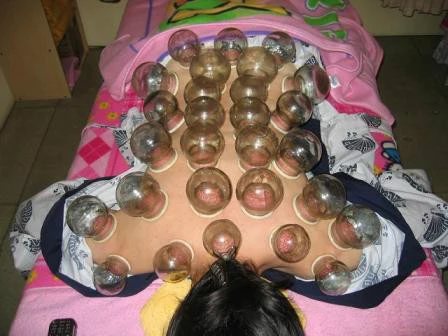
Signs of Cupping in the Large Intestine Area:
1. If purple-red marks appear, it indicates heat in the large intestine, which may present with dry stools, bad breath, and dizziness.
2. If light purple circles appear, it indicates retained stool and dryness.
3. If white appears, it indicates wind-cold invasion, primarily in the abdomen.
4. If reddish and enlarged pores appear, it indicates damp-heat in the large intestine, poor digestion, frequent stools, or rapid bowel movements after meals.
5. If gray-white and indentations appear, it indicates slow peristalsis, with stools occurring every three to five days, accompanied by hard stools.
6. If red spots appear, it indicates enteritis; if purple spots appear, it indicates chronic enteritis; if light purple spots appear, it indicates a history of enteritis.
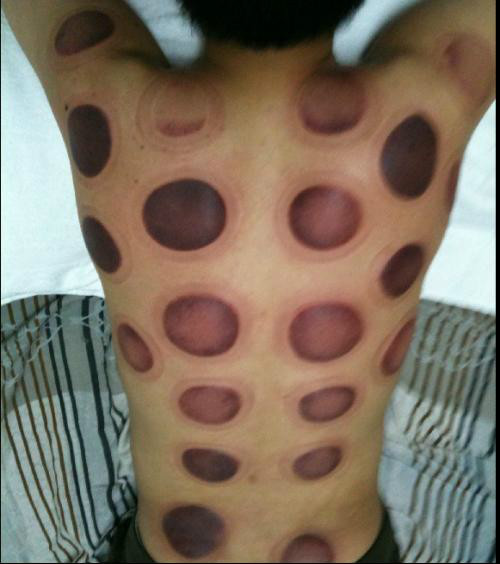
Signs of Cupping in the Small Intestine Area:
1. If purple-red spots appear, it indicates dysfunction of the small intestine, primarily presenting with abnormal bowel movements, lower abdominal cramps, and bloating.
2. White with enlarged pores indicates wind-cold invasion, primarily in the abdomen, accompanied by bowel sounds and gas.
3. If gray-white and indentations appear, it indicates slow peristalsis in the small intestine.
4. If purple-red spots appear, it indicates enteritis.
5. If dark red circles appear, it indicates ulceration.
6. If dark purple appears, it indicates toxins in the intestines.
7. If light purple spots appear, it indicates a history of inflammation.
8. If dark purple circles appear, it indicates constipation and retained stool.
Signs of Cupping in the Kidney Area:
1. If purple-red spots appear, it indicates kidney qi instability, such as chronic nephritis, with frequent clear urination, nocturia, and soreness in the lower back and legs.
2. If white appears, it indicates kidney deficiency with water retention, severe swelling below the waist, reduced urine output, and in severe cases, abdominal distension and scrotal swelling.
3. If small depressions appear, it indicates granular kidney stones; if white sandy granules appear, it indicates gravel-like kidney stones.
4. If enlarged pores appear and do not fade for a long time, the left kidney indicates wind-cold in the lower back, while the right kidney indicates rheumatism in the joints.
5. Purple spots indicate past injuries to the lower back, such as sprains, bruises, or other trauma.
6. If purple or light purple circles appear internally, it indicates water retention in the kidney area.
7. If there is a significant color difference between the two kidneys, such as the left kidney being purple-red and the right kidney gray-white, it indicates uncoordinated kidney function, with yang excess and yin deficiency, or vice versa.
8. If both kidneys appear entirely purple-red with a hard protrusion, it indicates hyperfunction.
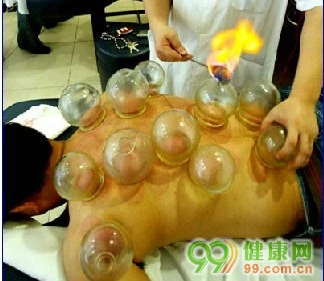
Signs of Cupping in the Bladder Area:
1. If purple-red bruises appear, in males, it indicates prostatitis, frequent urination, urgency, painful urination, or difficulty urinating; in females, it indicates menstrual irregularities and other gynecological diseases.
2. If purple-red patches appear with dull color, in males, it indicates prostate enlargement; in females, it indicates cervical erosion.
3. If purple-red spots appear in the lower area, it indicates hemorrhoids.
4. If the outer circle is white and the inner circle is light purple, it indicates signs of diabetes; if the center is red, it indicates current exacerbation, with at least two symptoms present.
5. If peeling occurs, it indicates chronic diabetes symptoms.
6. If the entire cupping area appears gray-white with indentations, it indicates reduced sexual function.
7. If irregular light purple circles appear, it indicates past trauma and kidney dysfunction.
8. If dark purple spots appear in females, it indicates gynecological diseases, with the upper area indicating uterine diseases and the upper diagonal areas indicating appendiceal or ovarian diseases.
9. If light purple spots appear in females, it indicates uterine fibroids.
Note: Leave the cups on for 5 to 6 minutes before removing them, and assess the skin after cupping to determine the disease. This method is based on clinical experience and should not be used as a theoretical basis, but for reference only.
